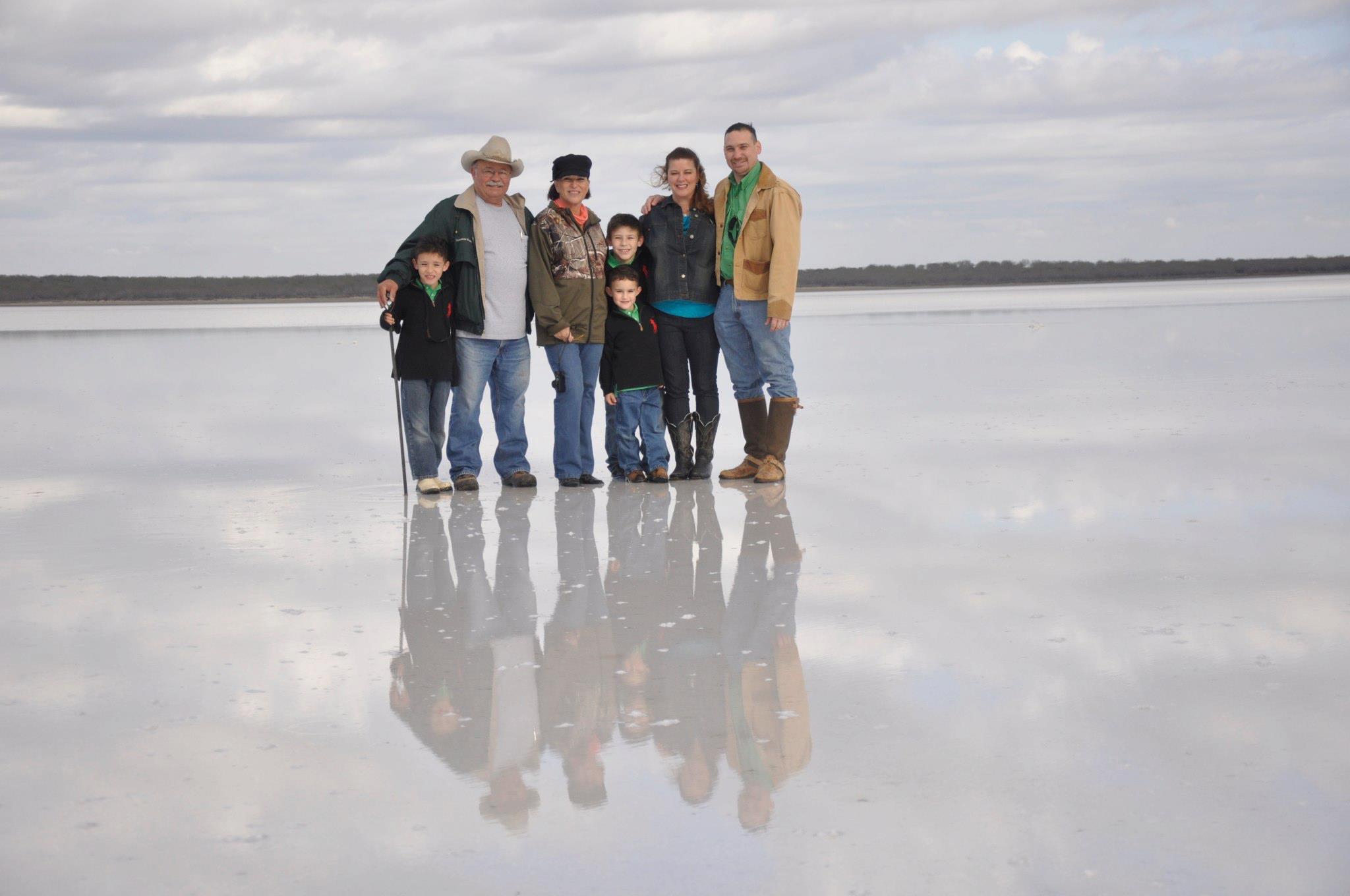It’s a gorgeous day in Hidalgo County. The country breeze brings with it a fragrance of simpler times. The clouds skate effortlessly across the sun-kissed sky. There’s a sense of otherworldliness. A calm that never seems to break.
You see it from a distance. The lake immaculately mirrors the heavens above it. As above, so below. The sand glistens ever so brightly; like a million times a million, times a million, stars. All shimmering in the daylight.
Except…
As you step foot on the shore, the land doesn’t give way as you had expected. The ground isn’t as tender as you had anticipated. It crunches below your feet. It’s a crisp sound that echoes all throughout the Tamaulipan thornscrub and grasslands.
You bend down to inspect. The grains are large; a brilliant white. In fact, this is no sand, at all. This is the king’s treasure.
This is La Sal del Rey.

A Whisper From the Past
There is a peculiar lake in central Hidalgo County. It tells a story that echoes through time. Pottery shards, shell ornaments, spear lances and other prehistoric artifacts suggest that Paleo-Indians may have camped by the water - more than 1,000 years ago.
For centuries, La Sal del Rey drew the attention of American Indians, Spanish conquistadors, Mexican traders, and purportedly the Aztec Empire. All for one valuable reason - its salt.
The mile-long, 5-mile-wide lake covers 530 acres, is on average 4-feet deep and is estimated to hold at least 4 million tons of salt. The salt was absolutely essential for the natives of that time who would have used it to preserve their meats and animal hides. Stone tools and arrowheads have been found on the lake’s perimeter suggesting that these prehistoric people likely camped on the ground while they obtained the salt they would need for their travels.
Historic Spanish writings by conquistadors note that the Aztec Empire would send out parties to the north to collect the salt and carry it back home. However, it was to be the Spanish who would turn the salt of the lake into an international commodity.
In the Name of the King
The Spanish explorers who first “discovered” the lake and its sister lake, La Sal Vieja, were eager to exploit the salt deposits in the name of the Spanish crown. Both were to be mined, but it was the aptly named La Sal del Rey - or “the King’s salt” - that would prove to be the more valuable of the two.
Renowned for its ability to replenish its salt within a few days, La Sal del Rey would come to be a highly regarded and valuable resource for the growing international power. By 1729, the sites had already been identified on maps and special provisions had been delivered directly from the Crown which would allow salt miners - known as salineros - the ability to mine and ship the product into Mexico using mules and oxcarts.
The salt mined from La Sal del Rey would be the first export from the Rio Grande Valley.
But as is bound to happen, history could not be stopped. It was the Mexican-American War that would cause a decline in the exportation of salt from La Sal del Rey. However, it wasn’t the end of the lake’s storied history.
A New Era: A New Demand
The American Civil War would reignite the region’s salt exportation industry. With an ever growing demand for salt, the prices skyrocketed from 60 cents a bushel to $20 a bushel. The Confederacy was eager to take advantage of La Sal del Rey and would use camel caravans - with each animal carrying 600 pounds of salt - to carry the product to Brownsville where it could be moved to Matamoros and Bagdad for international shipment.
In 1863, Union forces would capture the area and destroy the salt works. But the Confederate army would once again seize the lake and reopen for mining the following year.
Following the Civil War, and as a result of Spain’s mineral rights continued through from the Spanish Colonial period, a legal dispute arose over the rightful ownership of the salt. The State of Texas would ultimately declare that the mineral rights belonged to the property owners and thus could no longer be used by the general public.
Salt mining continued at La Sal del Rey until the 1930s.

Return to Wilderness
Today, La Sal del Rey maintains its legendary status. Still producing tons of salt. Still exhilaratingly beautiful.
Acquired in 1992 by the Lower Rio Grande Valley National Wildlife Refuge, the area has reverted to its natural state. As a part of a greater 5,400-acre tract, the lake and its surrounding area have been recognized by the National Register of Historic Places, receiving a designation of “Site of International Significance.”
The tract of land is noted for its unique place in Texas history and its diversity of wildlife and native plants. Visitors can now walk the saline shoreline - the same Native American would have looked out upon hundreds of years ago.
It’s worth noting that this gorgeously unique and historic destination is open to the public. For those interested in visiting La Sal del Rey:
Directions- Starting from McAllen, head north on Hwy 281 for approximately 20 miles. Exit 186 East for approximately 4 miles until you reach the kiosk on the north side of the road.
- From Cameron County, head north on Hwy 77 for approximately 24 miles. Exit 186 West and follow for approximately 22 miles to the kiosk.





